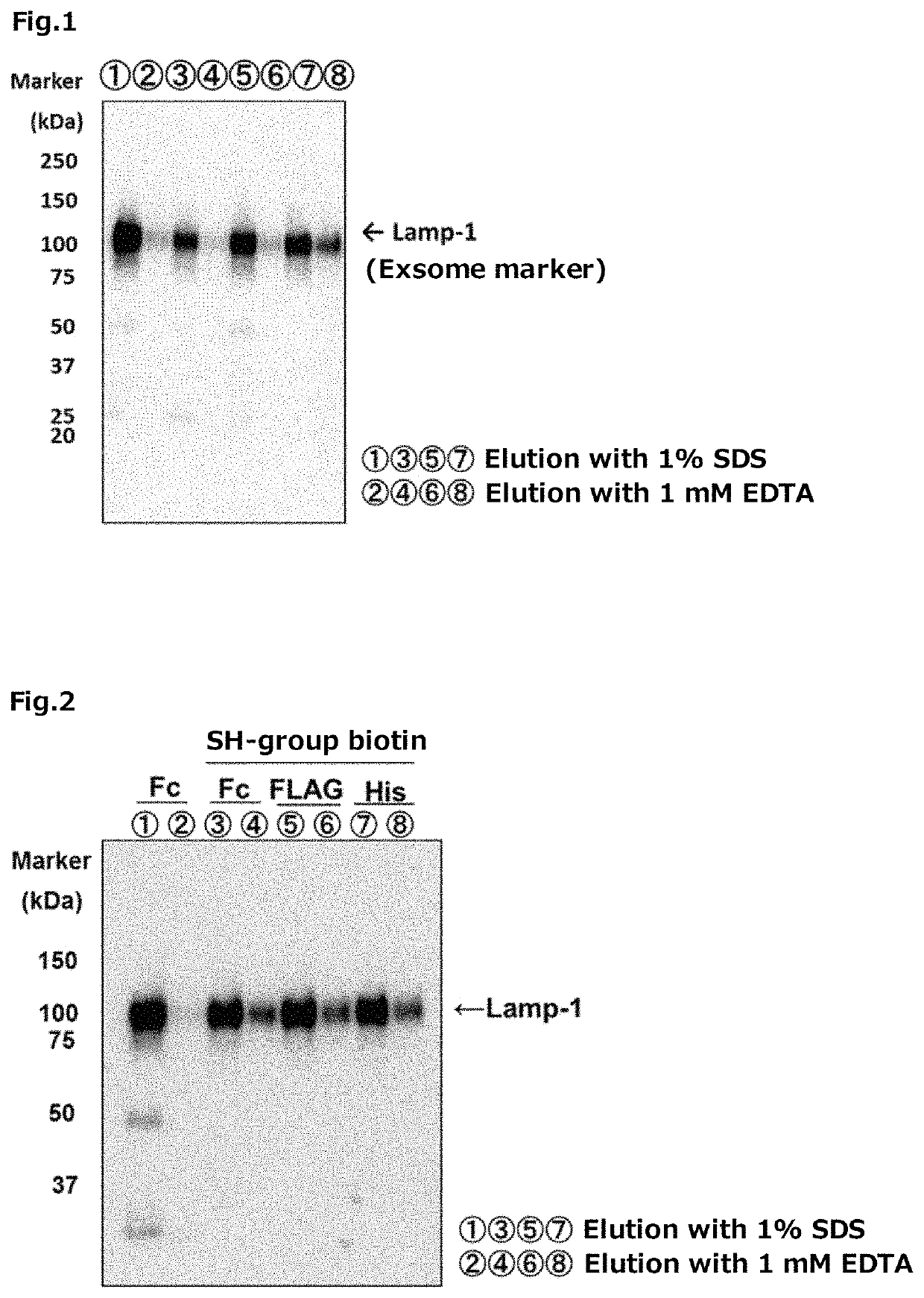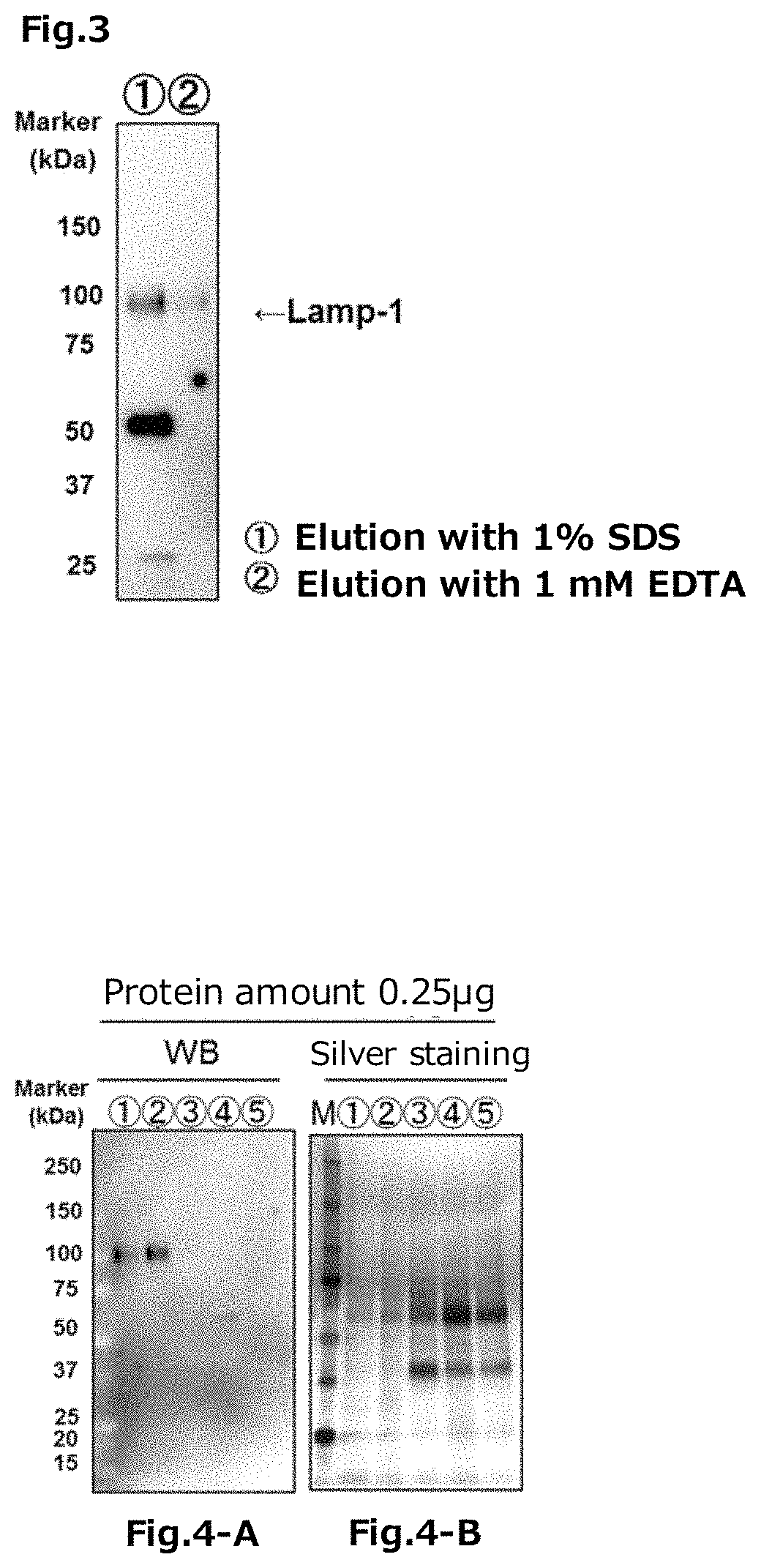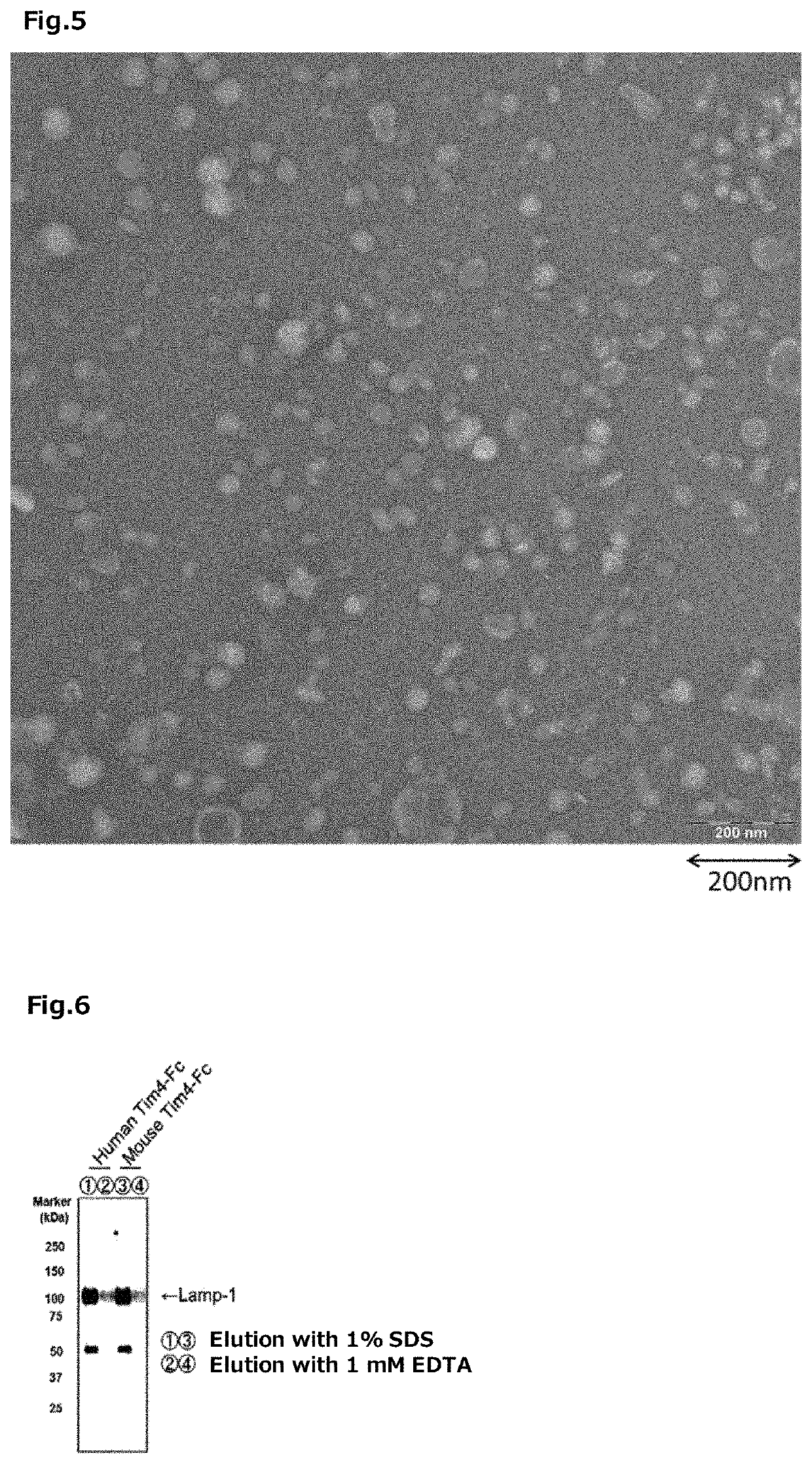Tim protein-bound carrier, methods for obtaining, removing and detecting extracellular membrane vesicles and viruses using said carrier, and kit including said carrier
a technology carrier proteins, which is applied in the field of tim protein-bound carriers, can solve the problems of difficult separation of extracellular membrane vesicles from hdl having the same density, difficult to obtain highly pure extracellular membrane vesicles, etc., and achieves high purity and high sensitivity
- Summary
- Abstract
- Description
- Claims
- Application Information
AI Technical Summary
Benefits of technology
Problems solved by technology
Method used
Image
Examples
experimental example 1
Fusion Type Tim-4 Protein
[0351]The Fc tag fusion type Tim-4 protein was prepared by the following method.
[0352]First, a vector was constructed for expression of the Fc tag fusion type Tim-4 protein in which a cDNA (SEQ ID NO: 26) encoding the N-terminal 1 to 273 amino acid region of a mouse-derived Tim-4 protein was incorporated into the Sall-EcoRV site of a pEF-Fc vector (hereinafter it may be abbreviated as “the pEF-Tim-4-Fc”, in some cases).
[0353]On the other hand, 293 T cells (RIKEN BRC) were each cultured for 1 day using 25 sheets of 150 mm dishes for cell culture, using 20 mL of DMEM (produced by Nacalai Tesque, Inc.) containing 10% FBS (produced by BioWest Co., Ltd.). Thereafter, for each dish, 25 mL of DMEM containing 10% FBS was replaced with 25 mL of FBS-free DMEM.
[0354]Thereafter, 20 μg of the pEF-Tim-4-Fc was transfected into each of 293 T cells, using Polyethylenimine “MAX” (produced by Polysciences Inc.), according to a usual method. After transfection, the 293 T cells...
experimental example 2
g Fusion Type Tim-4 Protein
[0358]The FLAG tag fusion type Tim-4 protein was prepared by the following method.
[0359]First, a FLAG tag fusion type mouse-derived Tim-4 protein cDNA (a cDNA encoding an amino acid sequence fused with 1×FLAG at the C-terminal of the N-terminal 1 to 273 amino acid region of the mouse-derived Tim-4 protein, SEQ ID NO: 33 (containing a stop codon (taa) and a nucleotide sequence encoding 1×FLAG, in this regard, however, excluding the restriction enzyme site), produced by Fasmac Co., Ltd.), was incorporated in an XhoI / BamHI site of a pCAG-Neo vector (produced by Wako Pure Chemical Industries, Ltd.) to construct a vector for expressing the FLAG tag fusion type Tim-4 protein (hereinafter it may be abbreviated as “the pCAG-Tim-4-FLAG”, in some cases).
[0360]On the other hand, the 293 T cells (RIKEN BRC) were cultured for 1 day using 50 mL DMEM (produced by Wako Pure Chemical Industries, Ltd.) containing 10% FBS (produced by Biosera) in a 225 cm2 flask by seeding, ...
experimental example 3
Fusion Type Tim-4 Protein
[0363]The His tag fusion type Tim-4 protein was prepared by the following method.
[0364]The His tag fusion type mouse-derived Tim-4 protein cDNA (a cDNA encoding an amino acid sequence fused with 6×His tag at the C-terminal of the N-terminal 1 to 273 amino acid region of the mouse-derived Tim-4 protein, SEQ ID NO: 34 (containing the stop codon (tga) and a cDNA encoding 6×His tag) was incorporated in the XhoI / BamHI site of the pCAG-Neo vector (produced by Wako Pure Chemical Industries, Ltd.) to construct a vector for expressing the His tag fusion type Tim-4 protein (hereinafter it may be abbreviated as “the pCAG-Tim-4-His”, in some cases).
[0365]On the other hand, the 293 T cells (RIKEN BRC) were cultured for 1 day using 50 mL of DMEM (manufactured by Wako Pure Chemical Industries, Ltd.) containing 10% FBS (produced by Biosera) in a 225 cm2 flask. Thereafter, 60 μg of the pCAG-Tim-4-His was transfected into the 293 T cells using Lipofectamine 2000 (produced by ...
PUM
| Property | Measurement | Unit |
|---|---|---|
| particle size | aaaaa | aaaaa |
| particle size | aaaaa | aaaaa |
| pH | aaaaa | aaaaa |
Abstract
Description
Claims
Application Information
 Login to View More
Login to View More - R&D
- Intellectual Property
- Life Sciences
- Materials
- Tech Scout
- Unparalleled Data Quality
- Higher Quality Content
- 60% Fewer Hallucinations
Browse by: Latest US Patents, China's latest patents, Technical Efficacy Thesaurus, Application Domain, Technology Topic, Popular Technical Reports.
© 2025 PatSnap. All rights reserved.Legal|Privacy policy|Modern Slavery Act Transparency Statement|Sitemap|About US| Contact US: help@patsnap.com



